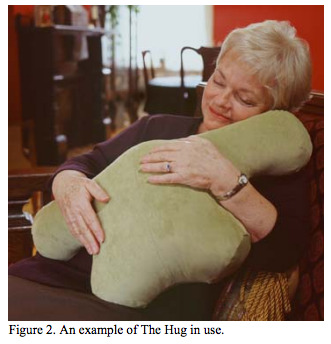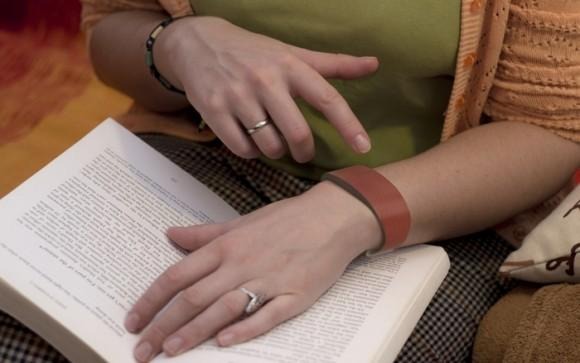What Are Developers Doing To Bring Us All Back Together In Meatspace?
This past Monday, Apple released a commercial depicting what initially appears to be a disaffected teenager ignoring his whole family on a holiday get-together as he stares and thumb-pecks at his iPhone the whole time. In the end, it turned out he was actually shooting footage of his family as a Christmas gift. He edits the footage into a home movie, screencasts it to the living room TV via AirPlay, and the whole family has a Tiny Tim moment as they watch themselves interacting onscreen. Even Grandma is crying tears of joy.
The teen was "Misunderstood", as the commercial's title explains. He wasn't some zombie child of the digital age, disconnected from reality and unable to empathize with other human beings. He was disappearing inside his technology because he wanted to be closer to his family when he finally emerged.

That's the message I got, anyway. The commercial is open to interpretation, but it calls to mind a theme that's been bugging me for, oh, my whole life, and that's this: Is technology actually bringing us closer together, or is it separating us?
Are all these Internet-connected devices allowing us to stay connected when we can't (or don't want to) be together in physical space? Or can it be that communications technology, rather than providing methods of meaningful long-distance communion, are actually just providing us with more routes to run away — to act as if we are together when really we're not? Could it possibly be fair to say we are using technology to take what we want from each other and ignore the inconvenient parts of ourselves — to cut out the discomfort of actually having to directly confront our fellow living, breathing sacks of meat?
And doesn't that feel just a little bit insulting to you as someone who would rather be grappled with for everything you are, rather than virtually editing out the ugly bits and keeping just the parts of you that look good in a headshot or sound good on a resume?
The answer is that technology both separates us and unites us. It just depends on the technology.
Last year Microsoft patented the Hug — a fluffy device that lets you "hug" your loved ones from anywhere on the planet.

It's a pillow with arms. Its lights up and sings a "warm melody" when your loved one a thousand miles away that you haven't seen in person in six years wants to have a hug with you. You pick it up and hug it. It hugs back. On the other end, your loved one can sense through the capital-H Hug how fimly or gently you are lowercase-h hugging them. Read the whole sad summary over on Geekwire if you want.
More recently, the developers at Woodenshark have created TapTap, the wristband that lets you tap-tap it so that your loved one feels the tap-tap in their own TapTap. The harder you tap-tap, the more forcefully they feel it. Now you can mechanically tap-tap your TapTap all day long, and you and your partner can take each other for granted over great distances without having to smell each other. Of course, that's only until you meet up later, right? Because certainly you'll want to hang out in person even though you have the intimacy of an accelerometer connecting you. Right?

More recently, Don Reisinger last weekend was lamenting the seeming nonstop wane of in-person multiplayer gaming. The majority of the most popular new games for next-gen consoles Xbox One and PlayStation 4 don't have in-person multiplayer functionality — with one notable exception being Call of Duty: Ghosts, but even that game, Reisinger notes, is mostly intended for online play.
Even our pets are starting to miss us, if the advent of PetChatz is any indication. PetChatz is a webcam with a treat dispenser.

You're at work, you think of Fluffy, so you pull up the PetChatz app. At home, the webcam makes a noise you've trained Fluffy to respond to, so he comes running. Now he's seeing a two-dimensional video display of your face, which I'm pretty sure most pets aren't cognitively equipped to process, and you're telling Fluffy he's a good boy. The PetChatz even emits an irresistible scent. Now in your app, you press a button, and at home, out pops a treat from the dispenser. You remind Fluffy he's a good boy, you talk about the news of the day for a bit, maybe some advanced calculus, and you hang up. Then Fluffy hangs around the PetChatz for the rest of the day in an eternally worsening state of feline existential confusion until you come home.
At this point you no doubt think me some kind of a Luddite. Fair enough. Allow me to focus on some technology that actually encourages us to come closer together in physical space and look each other dead-in-the-eye. The standout example that comes to mind right now is Ingress, the Niantic-developed role-playing game (RPG) that takes place both virtually and in the real world. Just look at all these smiling faces.

You download the Ingress app to get started, but from there you can assemble real-world teams. Together you have to physically meet in meatspace to carry out certain GPS-based tasks. Each Ingress game is a different story. The last one, entitled Operation #13Magnus, saw two worldwide teams performing a weeks-long relay race to reassemble the 13 pieces of one Roland Jarvis, self-proclaimed leader of the Enlightened Faction, and then either destroy or resurrect him. Don't worry, it's supposed to sound confusing to the uninitiated. The point is, it brings people together.
Or take the heartwarming example of the homeless man who, when offered the choice between $100 and a lesson in Javascript, took the coding tutorial and developed an app that helps people find carpool groups. His motivation was saving the environment, but the much more immediate effect was to bring human beings closer together — in a cramped space, no less.
Or look at Will Powell's Google Glass project wherein wearers can communicate with people face to face in languages they have no knowledge of. The confluence of technology here allows the wearable computer to hear what was said and translate it onscreen in real time. It's a babelfish for our time, connecting us in physical space with people from any cultural background.
On the localism front, there are a whole range of location-based social networks, the most well known of which is Foursquare. Another is the possibly-to-be-released "Nearby" feature of Twitter, which will show on a map who tweeted what in their area. While apps like these may not bring people face to face, they at least acknowledge the existence of physical space as a real factor in meaningful human relationships.
We need more technologies like these. In a world where expressing sympathy can be replaced with clicking "Sympathize", it would be nice to see more developers putting their genius to the good use of reconnecting human beings in time and space. We don't need more ways to imitate interaction. We need more interaction. I don't know what the latest psychology fad studies have been saying, but it seems to me 99% of any meaningful relationship depends on actual presence.
The problem is not that we have yet failed to more accurately capture and reproduce a human soul. It's that we keep dreaming up more reasons not to come together. Yes, we love that using a Kinect we can almost literally reach through a computer screen and manipulate objects, and yes, we appreciate the fact that our aging mothers and fathers can be safety-monitored via the airwaves. But I for one would very much like to see more developers coming up with amazing new ways bringing us all back together without a filter.
